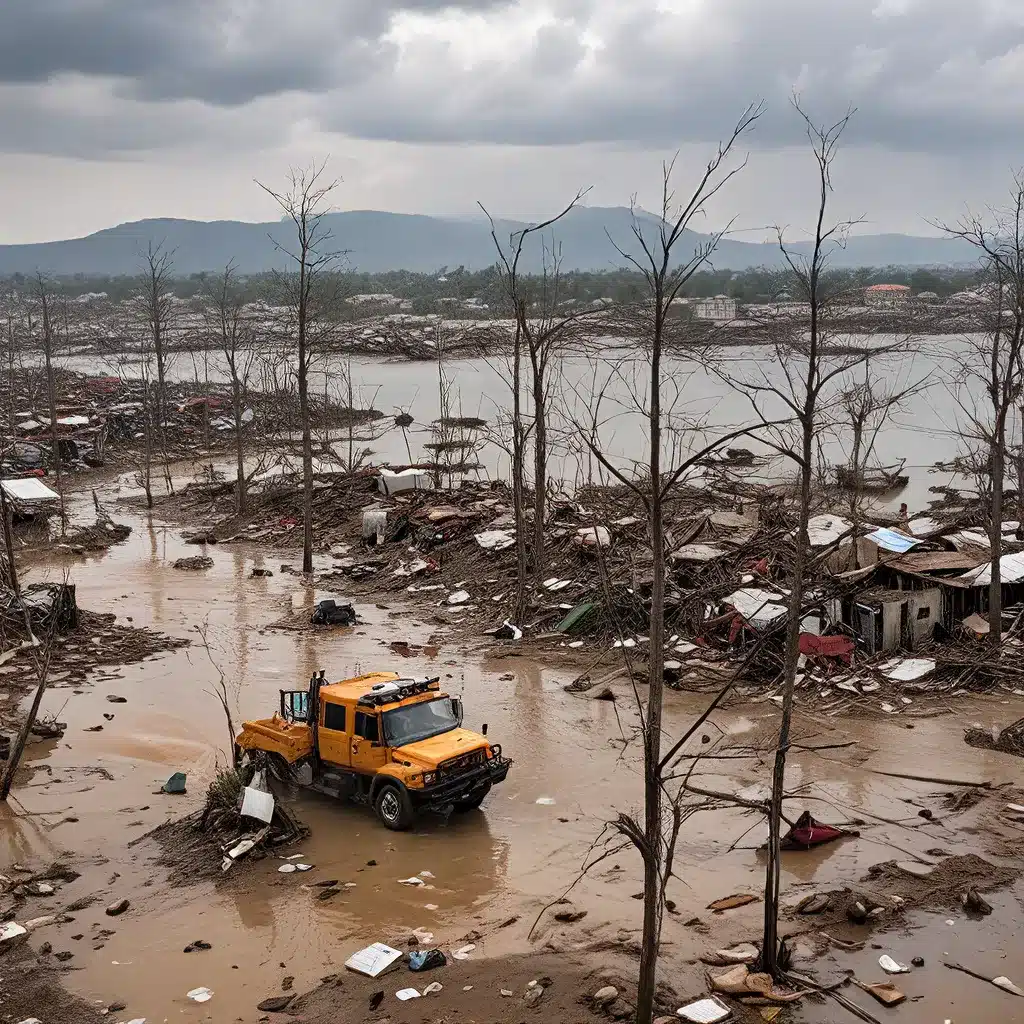
Unleashing the Power of Sensor Networks in Disaster Management
In the face of natural disasters or emergency situations, situational awareness (SA) is a critical component for mobilizing a rapid, efficient, and effective response. However, this awareness is often constrained by factors such as unreliable communications, time-intensive data analysis, and a lack of interoperable sensor networks. Emerging technologies, if appropriately applied, can help address these challenges and empower responders to make quicker, more accurate decisions.
Federal government websites have recognized the importance of leveraging sensor networks and related technologies to enhance disaster response capabilities. By integrating these systems, responders can collect, analyze, and share actionable information across a complex landscape, ultimately improving coordination and decision-making.
Sensor Networks: The Backbone of Situational Awareness
Sensor networks are the backbone of situational awareness in disaster response. These interconnected systems of sensors, communication nodes, and data processing platforms can provide real-time, comprehensive data on the evolving situation. From monitoring environmental conditions to tracking the movement of people and resources, sensor networks can give responders a detailed, up-to-date understanding of the disaster’s impact and the ongoing needs.
An official website of the United States government highlights the critical role of sensor networks in disaster response, emphasizing their ability to enable rapid and effective coordination. By deploying sensor networks in the affected area, responders can gain deeper insights into the situation, allowing them to allocate resources more efficiently, coordinate rescue efforts, and communicate effectively with the public.
Enhancing Situational Awareness with Sensor Networks
Sensor networks can enhance situational awareness in disaster response in several key ways:
-
Real-time Data Collection: Sensor nodes deployed in the field can continuously collect and transmit data on various environmental factors, such as weather conditions, water levels, and infrastructure integrity. This real-time data feeds into a centralized system, providing responders with a constantly updated picture of the evolving situation.
-
Comprehensive Monitoring: Sensor networks can integrate a diverse array of sensors, from thermal imaging cameras to seismic activity monitors. This multifaceted approach allows for the comprehensive monitoring of the disaster’s impact, enabling responders to make more informed decisions.
-
Improved Coordination: By sharing data across a common platform, sensor networks facilitate communication and coordination among different response agencies, allowing for a more unified and effective approach to disaster management.
-
Rapid Decision-making: The timely and accurate information provided by sensor networks can enable responders to make quicker decisions, improving the efficiency of resource allocation, evacuation planning, and emergency response.
Overcoming Challenges in Sensor Network Implementation
While the potential of sensor networks in disaster response is clear, there are several challenges that must be addressed to ensure their effective deployment and utilization:
Interoperability and Data Integration
One of the primary challenges is the lack of interoperability among various sensor systems and data platforms. Responders often face difficulties in integrating and synthesizing data from different sources, hampering their ability to maintain a comprehensive, real-time understanding of the situation.
The systematic review highlights the need for standardized protocols and open data exchange platforms to facilitate seamless data integration and sharing across agencies and organizations.
Resilient Communication Networks
Reliable and resilient communication networks are critical for sensor networks to function effectively during disasters, when existing infrastructure may be compromised. Robust wireless communication protocols, such as long-range wide-area networks (LoRaWAN) or cellular-based technologies, can help ensure uninterrupted data transmission even in challenging environments.
Moreover, the use of mesh networking and edge computing strategies can enhance the resilience of sensor networks by enabling decentralized data processing and decision-making, reducing reliance on centralized infrastructure.
Energy Efficiency and Scalability
Sensor networks deployed in disaster scenarios must be energy-efficient and scalable to ensure continuous operation and adaptability to changing needs. Advancements in low-power wireless technologies, energy harvesting techniques, and efficient data management algorithms can help address these challenges.
Sensor Network Applications in Disaster Response
Sensor networks can be applied in various aspects of disaster response to enhance situational awareness and enable more effective coordination:
-
Environmental Monitoring: Sensor nodes can be used to monitor environmental conditions, such as weather patterns, water levels, and air quality, providing early warning signals and informing decision-making.
-
Infrastructure Assessment: Sensors can be deployed to assess the structural integrity of buildings, bridges, and other critical infrastructure, helping responders prioritize search and rescue efforts.
-
Hazardous Materials Tracking: Sensors can be used to detect and track the movement of hazardous materials, such as chemical spills or radiological leaks, enabling targeted evacuation and containment measures.
-
Emergency Communication: Sensor networks can serve as a backup communication system, providing alternative channels for emergency messaging and coordinating response efforts when primary communication networks are disrupted.
-
Resource Allocation: Sensor data can be used to optimize the deployment and utilization of resources, such as emergency vehicles, medical supplies, and shelters, ensuring they are directed to the areas of greatest need.
The Future of Sensor Networks in Disaster Response
As sensor network technologies continue to evolve, their role in disaster response is poised to become even more critical. Advancements in areas such as artificial intelligence (AI), machine learning (ML), and the Internet of Things (IoT) are expected to further enhance the capabilities of sensor networks, enabling more intelligent data analysis, automated decision-making, and seamless integration with other emergency management systems.
Sensor-networks.org is at the forefront of these advancements, providing a platform for researchers, policymakers, and practitioners to collaborate and drive innovation in this critical field. By harnessing the power of sensor networks, the disaster response community can improve coordination, enhance situational awareness, and ultimately save more lives in the face of natural disasters and emergency situations.